Trees Birds Mammals Fish Amphibians Reptiles
Wild Algarve
Bookshop
Parasola conopilus (Fr.) Örstadius & E. Larss. - Conical Brittlestem
Phylum: Basidiomycota - Class: Agaricomycetes - Order: Agaricales - Family: Psathyrellaceae
Distribution - Taxonomic History - Etymology - Identification - Culinary Notes - Reference Sources
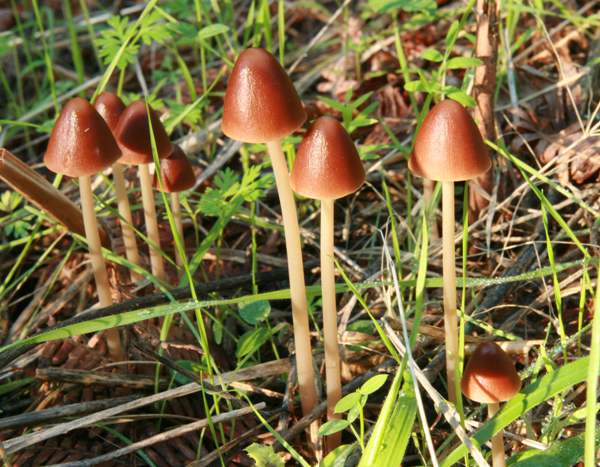
Seen when they are moist after rain and glistening in the sunshine, a group of fresh Conical Brittlestems makes a truly wonderful display, grouped as they invariably are on compacted layers of twigs or buried wood of deciduous broadleaf trees. When they are growing from buried wood debris in grassland, the tall straight stems are helpful identifying features of these graceful 'little brown mushrooms'.
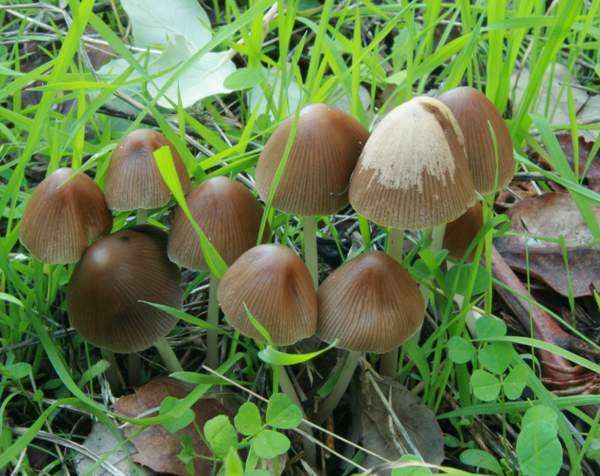
Like so many hygrophanous mushrooms, once the caps have dried they lose their lustre and become matt and very much paler and in very dry conditions they turn almost white. The colour change begins at the centre, so that the caps pass through a two-tone stage, as shown above.
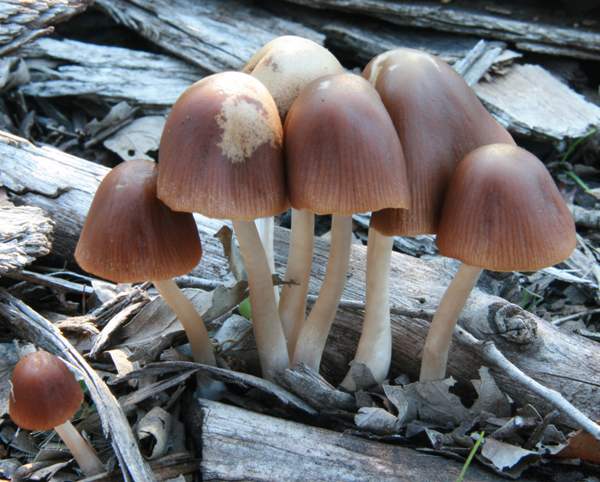
This species has been moved recently into the genus Parasola from the genus Psathyrella, despite being in many respects rather different from other coprinoid LBMs that have been placed in that genus. (Although it has large spores, as do other Parasola mushrooms, some other microscopic characters of Parasola conopilus - the cap cystidia in particular - are quite unlike those of other Parasola fungi.)
This Psathyrella lookalike is still listed in most field guides and many online reference sources as Psathyrella conopilus (Fr.) Ulbr.
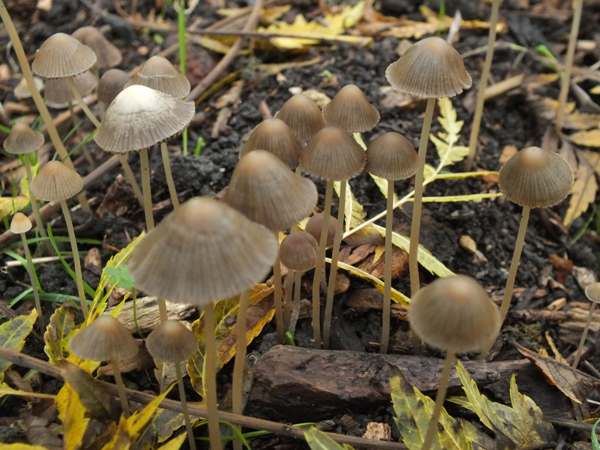
Distribution
Fairly common and widespread across Britain and Ireland, Parasola conopilus is also found throughout most of mainland Europe. This species has also been reported from many parts of North America.
Taxonomic history
The Conical Brittlestem was described in 1786 by German mycologist August Johann Georg Karl Batsch (1761 - 1802), who gave it the scientific name Agaricus subatratus; however, it was Swedish mycologist Elias Magnus Fries who, in 1821, established the basionym (first valid epithet) of this mushroom, naming it Agaricus conopilus.
The currently-accepted scientific name of the Conical Brittlestem, Parasola conopilus, was established in 2008 by Swedish mycologists Leif Örstadius & Ellen Larsson.
Synonynms of Parasola conopilus are many and include Agaricus subatratus Batsch, Agaricus conopilus Fr., Agaricus superbus Jungh., Agaricus aratus Berk., Psathyra conopilus (Fr.) P. Kumm., Psathyrella subatrata (Batsch) Gillet, Drosophila conopilus (Fr.) Quél., Agaricus conopilus f. superbus (Jungh.) Cooke Agaricus conopilus var. superbus (Jungh.) Cooke, Psathyra elata Massee, Psathyrella arata (Berk.) W.G. Sm., Psathyrella conopilus (Fr.) Ulbr., and Psathyra conopilus var. subatrata (Batsch) J. E. Lange.
Etymology
The specific epithet conopilus means with a conical cap.
Identification guide
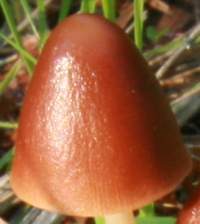 |
Cap
2 to 3.5cm across, conical or sometimes bell-shaped, the caps of Parasola conopilus are shiny red-brown when moist becoming matt grey-beige or ochre after drying out; the cap margin is finely striate.
Stem
Sometimes appearing to be rather too long for the size of cap: 7 to 14cm long and only 2 to 4mm in dia.; straight and vertical, or very nearly so; white; mostly silky smooth but more powdery near the apex and slightly downy towards the base; no ring. |
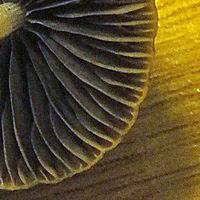 |
Gills
Adnate or adnexed; crowded, the gills of the Conical Brittlestem have finely serrated edges. The gills are greyish brown with white edges, turning very dark brown (almost black) as they age. |
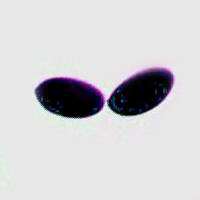 |
Spores
Ellipsoidal, smooth, 12.5-18 x 6.5-9µm; with an apical pore.
Spore print
Very dark brown, almost black. |
Odour/taste |
Not distinctive. |
Habitat & Ecological role |
Saprobic, among leaf litter beneath deciduous broadleaf trees, notably Beeches, and often along 'twiggy' roadside verges. |
Season |
June to November in Britain and Ireland. |
Similar species |
The Common Stump Brittlestem, Psathyrella piluliformis, which grows on dead hardwood, is similar but its caps are usually larger; it is paler when young and darkens with age. |
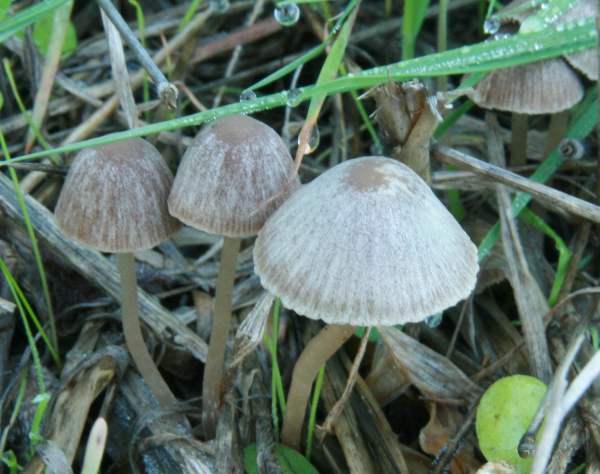
Culinary Notes
This brittlestem is generally regarded as inedible, and its small size and thin flesh mean that there is little temptation to try eating this insubstantial mushroom.
Reference Sources
, 2nd edition, Pat O'Reilly 2016
British Mycological Society. English Names for Fungi
Dictionary of the Fungi; Paul M. Kirk, Paul F. Cannon, David W. Minter and J. A. Stalpers; CABI, 2008
Taxonomic history and synonym information on these pages is drawn from many sources but in particular from the British Mycological Society's GB Checklist of Fungi.
Top of page...
Fascinated by Fungi. Back by popular demand, Pat O'Reilly's best-selling 450-page hardback book is available now. The latest second edition was republished with a sparkling new cover design in September 2022 by Coch-y-Bonddu Books. Full details and copies are available from the publisher's online bookshop...